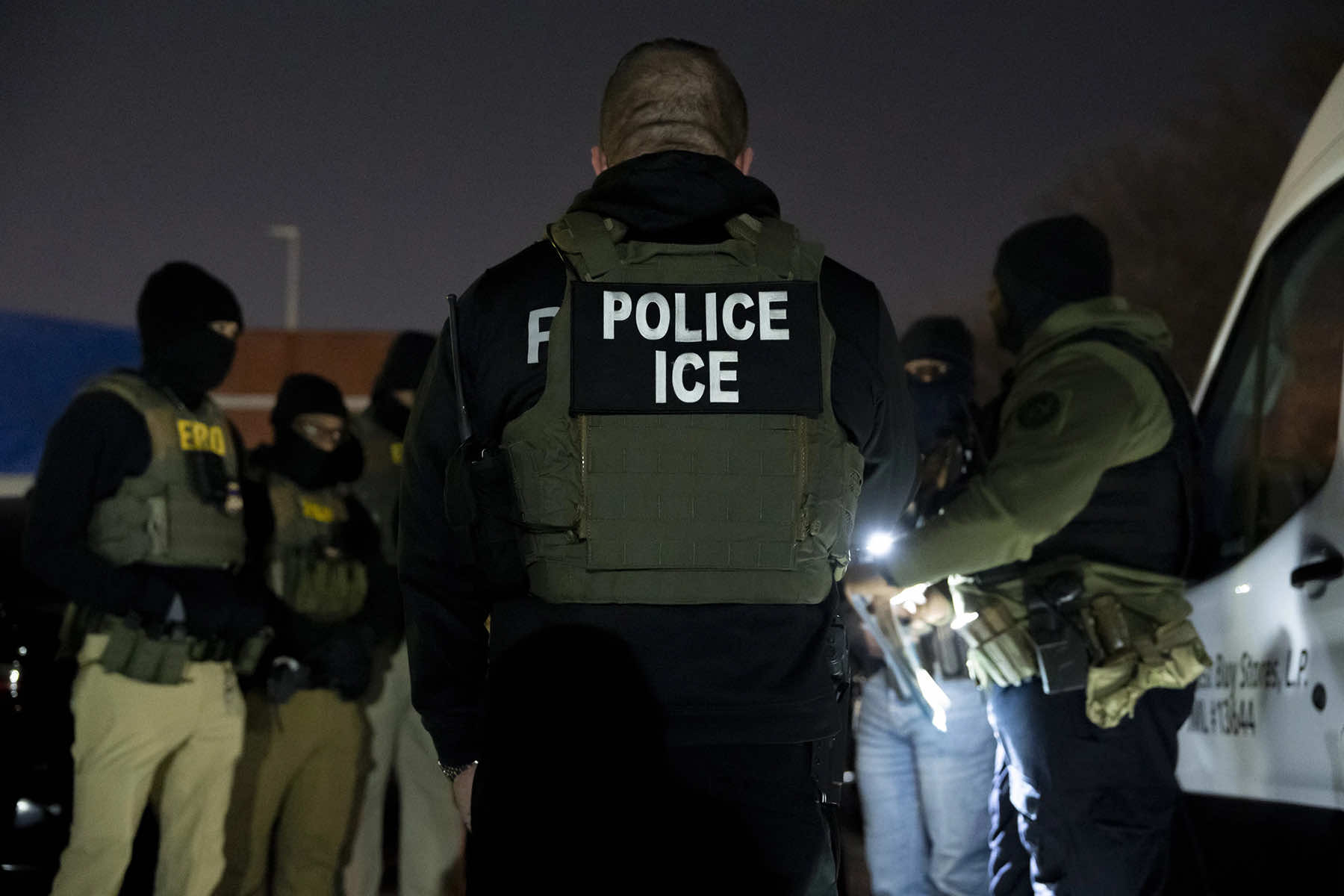
U.S. Immigration and Customs Enforcement (ICE) is not a secret police force, not yet. But recent actions taken by ICE under Donald Trump’s regime raise urgent and unavoidable parallels.
In just the span of two weeks, ICE unlawfully deported a Maryland father with legal protection from removal and detained a Turkish Fulbright scholar without due process. Both actions undermine judicial authority, sidestep legal protections, and expose the agency’s increasing willingness to act as an unaccountable enforcement arm of the executive.
The Gestapo, the official secret police of Nazi Germany, did not begin as an omnipotent terror machine. It evolved into one. Formed in 1933 and consolidated under Heinrich Himmler by 1936, the Gestapo operated outside judicial oversight.
It detained “enemies of the state” without warrants, held people in “protective custody” with no legal recourse, and enforced political conformity through fear. It became the spearpoint of Nazi totalitarianism not solely through brutality, but through the systematic erosion of legal constraints and the normalization of exceptional authority.
The alarming direction of ICE in 2025, at the very start of Trump’s second term, bears a critical resemblance to this historical model. In mid-March, ICE agents deported Kilmar Armando Abrego Garcia, a Maryland man who had been legally protected from removal since 2019. His protected status had been granted by an immigration judge who acknowledged the danger he faced in El Salvador. That ruling should have remained binding.
Instead, ICE agents detained Abrego Garcia on March 12 while he was picking up his son in Baltimore. Within three days, he was deported to El Salvador and transferred to CECOT — the country’s massive, high-security prison complex, where he was filmed being marched shirtless and handcuffed alongside alleged gang members. ICE later admitted the deportation was “an administrative error.”
But “error” is a misnomer. This was a violation of a standing court order. By definition, ICE overruled the legal system. There is no public record of a judge revoking Abrego Garcia’s status. The deportation was not a clerical oversight. It was an assertion of unchecked power, and one that placed a man’s life in jeopardy.
Then, on March 25, masked ICE agents arrested Rumeysa Ozturk, a Turkish national and Tufts University Ph.D. student, outside her Boston apartment. Ozturk was reportedly preparing to join friends for iftar during Ramadan. Federal authorities claim she supported Hamas, though no evidence has been publicly presented. Her visa was unilaterally revoked by Secretary of State Marco Rubio, and she was taken into custody without charge.
Video of the arrest shows agents in plain clothes forcing Ozturk into an unmarked vehicle. No warrant has been produced. A judge had ordered that if detained, she remain in Massachusetts. ICE transferred her to a Louisiana detention center anyway.
These are not routine immigration enforcement cases. These are deliberate power moves aimed at demonstrating that ICE answers not to courts or laws, but to the White House. Under Trump’s reassertion of direct executive authority, ICE has been repositioned to function outside traditional legal bounds. He has empowered them to seize protected individuals, ignore judicial orders, and deploy fear as a political tool.
The hallmarks of secret police are not simply secrecy or masks. The Gestapo operated with a chilling degree of visibility. What made them effective was the knowledge that no appeal could stop them. They were “lawful” only in the sense that the law had been rewritten to permit and shield their actions. Their true power came from impunity.
Trump’s regime is openly testing that same model. Deporting a man with protected status is not simply a mistake — it is a statement. Detaining a scholar under vague accusations without evidence, in defiance of court orders, is not security policy — it is intimidation.
MAGA supporters of Trump’s authoritarian have argued that these were isolated incidents. They are not. They reflect a growing pattern of ICE exercising authority in ways incompatible with constitutional checks and balances. Congress has not authorized this power. Courts have not sanctioned it. But ICE, under Trump, is behaving as though it operates outside both.
The shift has been years in the making. Trump’s first term saw the rapid expansion of ICE’s discretionary reach, including workplace raids, the targeting of activists, and efforts to surveil sanctuary cities. But the legal system often acted as a brake. Judges blocked some deportations. Congress pushed back on budget overreach. Civil rights groups filed successful injunctions. Now, under a second Trump term, those institutional barriers have eroded.
The Supreme Court, now firmly aligned with the executive branch, has declined to intervene in recent ICE overreach cases. The Department of Homeland Security, under leadership appointed to carry out Trump’s racially biased immigration priorities without compromise, has amplified rhetoric that labels any noncitizen suspected of dissent as a potential threat.
ICE, once ostensibly focused on deporting dangerous criminals, now operates in a gray zone between law enforcement and political enforcement. This is the road to a secret police force. And the signs are no longer subtle.
Like the Gestapo, ICE has begun asserting authority not just over undocumented migrants, but over legally present individuals. Ozturk was not undocumented. Abrego Garcia had legal protection. Both were targeted anyway.
Like the Gestapo, ICE is employing euphemisms such as “administrative transfer,” “security concern,” or “status review” to bypass due process. And like the Gestapo, ICE now deploys fear as policy: fear of seizure, of surveillance, of disappearance into a remote detention center with no legal remedy.
Even the visual language of ICE’s recent actions has shifted. Plainclothes agents in unmarked vehicles. Arrests with no warning, no badges, no transparency. Video of Ozturk’s detention evokes footage from authoritarian regimes, not a democratic republic.
Americans watching it are seeing the logical outcome of rhetoric that criminalizes presence, dissent, and difference — especially when the accused are brown, Muslim, or foreign-born.
Critics who warn against this trajectory are not engaging in hyperbole. They are describing the slow normalization of impunity. It is not the violence that makes a secret police force. It is the absence of accountability.
And on that score, ICE is increasingly unaccountable — not only to the public, but to the very judicial and legislative systems that are supposed to contain it.
This is not to say that ICE has become the Gestapo in full. The Gestapo killed with impunity, ran vast networks of informants, and operated concentration camps. ICE has not reached that level as yet. But history is not a binary. Authoritarianism is not a switch. It is a series of thresholds crossed, slowly at first, then all at once.
Trump’s posture toward law enforcement has never been subtle. In both his campaigns and his presidency, he has framed loyalty as the primary virtue in federal agencies. ICE is responding to that incentive structure. What we are now witnessing is not merely the politicization of immigration enforcement, it is the weaponization of federal power against legally protected individuals.
If ICE can defy a judge’s ruling today, can it refuse a court subpoena tomorrow? If ICE can detain a scholar without charges, can it target journalists next? If it can deport a protected immigrant, what stops it from ignoring asylum rulings altogether? These are not theoretical concerns. Each step forward conditions the public to accept the next.
Unless Congress acts to reassert control over ICE’s operational boundaries — with mandatory judicial oversight, strict limits on executive deportation authority, and robust transparency requirements — the agency will continue its descent into paramilitary behavior.
Unless courts intervene with meaningful consequences for violations of due process, ICE will continue to test how far it can go without legal consequences.
And unless the public demands answers — not just in court filings but in elections — ICE will continue evolving into an instrument not of immigration policy, but of political repression.
In 1930s Germany, many ordinary citizens justified the rise of the Gestapo by insisting that only “bad people” had anything to fear. Today, Americans are told the same thing. But justice is not a system of guilt by accusation. And power that escapes accountability rarely stops on its own.
We do not need to wait for ICE to become the Gestapo to call it what it is becoming. We only need to decide whether we are willing to stop it before it gets there.
© Photo
Alex Brandon (AP) and David Zalubowski (AP)














